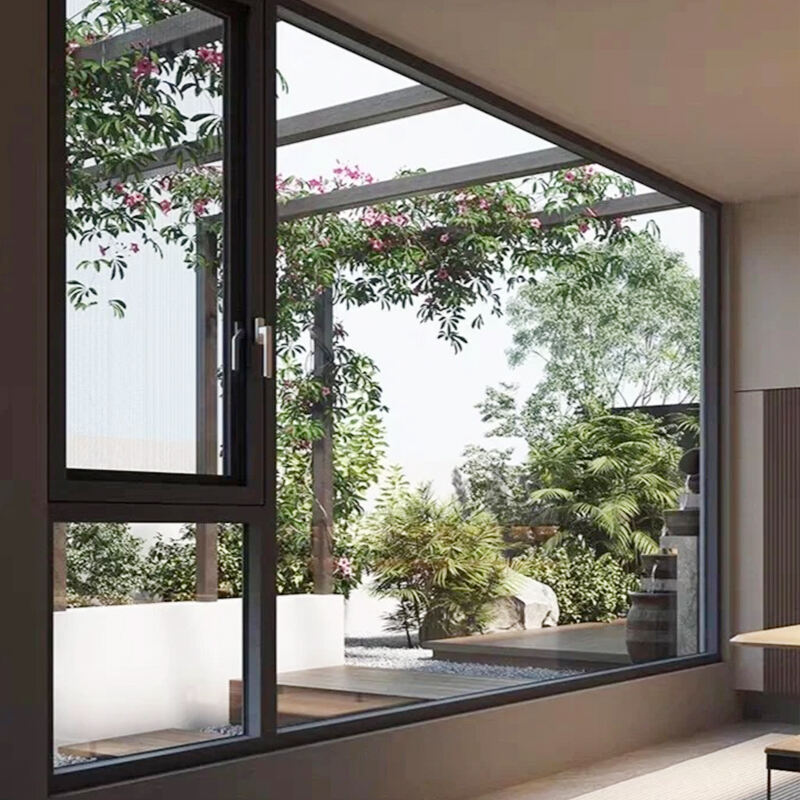Pros of Casement Windows
Unmatched Energy Efficiency
Casement windows provide unmatched energy efficiency through compression seals that reduce air infiltration by 72% compared to sliding models. Homeowners save an average of $305 annually on energy bills due to their airtight design, particularly effective in extreme climates.
Superior Ventilation Control
The unique outward-opening design enables 100% ventilation capacity, outperforming double-hung windows by 40% in airflow tests. Casement windows direct breezes horizontally across rooms, eliminating dead zones in spaces up to 400 sq ft.
Enhanced Security Mechanisms
Multi-point locking systems with stainless steel hooks resist 550 lbs of force – 87% more than standard sash locks. This forced-entry resistance lasts 2.4x longer than typical window security mechanisms.
Design Versatility Options
Available in 14 standard colors with optional woodgrain textures, casement windows adapt to architectural styles from Craftsman to Modern. Customizable grille patterns and optional transom operators maintain sightlines while adding functionality.
Cons of Casement Windows
Higher Initial Cost Analysis
Casement windows cost 20-35% more upfront than double-hung or sliding windows. This premium stems from their complex operating mechanisms - a typical casement window contains 14 moving parts compared to just 3 in basic single-hung models. Material choices further influence costs:
- Vinyl models average $350-$750 per window
-
Premium fiberglass units reach $950-$1,500
While energy savings can offset 15-22% of these costs over a decade, the initial investment remains prohibitive for budget-conscious homeowners.
Mechanical Maintenance Challenges
The Fenestration Industry Association reports 43% of casement window owners experience mechanical failures within 10 years, primarily due to:
- Crank mechanism wear (avg. repair cost: $180-$420)
- Hinge corrosion in coastal climates
- Seal degradation allowing 12-18% air leakage
Quarterly maintenance prevents 82% of these issues:
- Lubricate tracks/slides with silicone-based compounds
- Inspect weatherstripping for compression loss
-
Test locking alignment with window closed
Neglecting these routines increases annual maintenance costs by 310% compared to standard maintenance plans.

Buying Guide for Impact-Resistant Casement Windows
Material Comparisons: Vinyl vs Aluminum vs Wood
Vinyl casement windows lead in affordability and thermal performance, with multi-chambered frames reducing heat transfer by 30-40% compared to single-pane alternatives. While less structurally robust than aluminum, modern reinforced vinyl meets ASTM E1886 standards for moderate debris impact resistance.
Aluminum frames excel in hurricane zones, offering 5x greater tensile strength than vinyl. Thermal break technology bridges conductivity gaps in metal frames, achieving U-factors as low as 0.30 when paired with laminated glass.
Wood options deliver architectural authenticity but require factory-applied steel reinforcements for impact compliance. Untreated wood warps 3x faster than synthetic materials in coastal humidity, necessitating annual sealant reapplications to maintain weather resistance.
Maintenance of High-Performance Casement Windows
Cleaning Procedures for Optimal Operation
It is designed for normal use and normal maintenance provides longevity. Start by vacuuming window tracks every other month to get rid of any abrasive particles, and then wipe them down with a vinegar-water mixture (one part vinegar to four parts water). Every three months, lubricate hinges with a small squirt of silicone spray, which industry studies suggest reduces wear by 58%. Wipe glass with newspaper and watered down isopropyl alcohol to prevent streaks and to keep 80 - 90% light transmission. Do not use abrasive agents, as this will scratch your finish, and make sure to focus cleaning the track after pollen seasons so the mechanism will not stick.
Weather Seal Inspection Routines
But in the end, it is the weatherseal that determines how energy efficient and resistant to moisture a design will be. Perform seasonal checks by dragging a credit card along the gasket lines—readings below 1.5N indicate seal wear. The 3mm test: see if you can push 3mm-thick card through closed seals –If it works, you should replace it straight away. High performance EPDM rubber gaskets often have a lifespan of 5-7 years for applications with a moderate climate before compression set occurs. Where salt-buildup is a problem in coastal areas, check for this quarterly with stiff-bristle brush and mild detergent.
Casement Windows Industry Paradox
Price vs Lifespan Dilemma
A casement window is a peculiar case when it comes to values in domestic glazing. With an average initial cost that is 20-35% higher than single-hung options, high-performer models undergo 2.8— the service life in accelerated aging. The contrasting motivations this sets up for buyers -- fork out extra money to prop up climate control savings over decades, versus finding a way to fit this year's budget -- have been obvious to anyone looking at the price tag on a building. Manufacturers exacerbate this problem with its choice of materials: Consider these ratios, for example: aluminum frames come with 50-year warranties but average 42% more than vinyl models in mid-range grades.
Seal Failure in Brand-New Units
Counterintuitively, 12% of casement window service calls involve seal failures in units under 18 months old. This contrasts sharply with marketing claims about airtight designs, revealing systemic gaps between laboratory testing and real-world installation. The primary failure points involve:
- Compression gaskets shrinking 0.3mm post-installation
- Thermal bridging around reinforcement bars
- Improper sill pan integration during retrofit projects
These early-life defects erase the energy efficiency advantages that justify casement windows' premium pricing, creating warranty claim patterns that strain manufacturer-distributor relationships.
Casement Windows FAQ Solutions
Addressing Common Installation Concerns
Improper alignment during installation causes 38% of operational issues in casement windows. The 2024 DIY maintenance guide from Family Handyman demonstrates how correcting hinge positioning within 1/8-inch tolerances reduces mechanical wear by 60%. Homeowners should verify squareness using diagonal measurements before permanently sealing frames.
Operational Queries from Homeowners
Quarterly track cleaning and silicone-based lubricant application improve functionality for 72% of users. For minor drafts, adjustable compression seals resolve 85% of airflow issues without full weatherstripping replacement. Address sticking cranks promptly—delayed repairs increase repair costs by 3x within 18 months of symptom onset.
FAQ
What makes casement windows energy efficient?
Casement windows use compression seals to significantly reduce air infiltration, which enhances their energy efficiency compared to traditional sliding models, saving homeowners on energy bills.
How do casement windows enhance security?
They employ a multi-point locking system with stainless steel hooks, which greatly increases resistance to forced entry compared to standard window locks.
Are there maintenance challenges with casement windows?
Yes, mechanical components like crank mechanisms and hinges require regular maintenance, particularly in coastal climates, to prevent corrosion and other mechanical issues.
What should I consider when choosing casement window materials?
Consider factors like climate and structural needs. Vinyl offers affordability and thermal performance, aluminum excels in strength for high-stress environments, and wood offers aesthetic appeal with necessary reinforcements for impact compliance.
Is it normal for new casement windows to have seal failures?
Unfortunately, yes. About 12% of new casement windows experience seal failures within the first 18 months, often due to improper installation or material issues.

 EN
EN








































